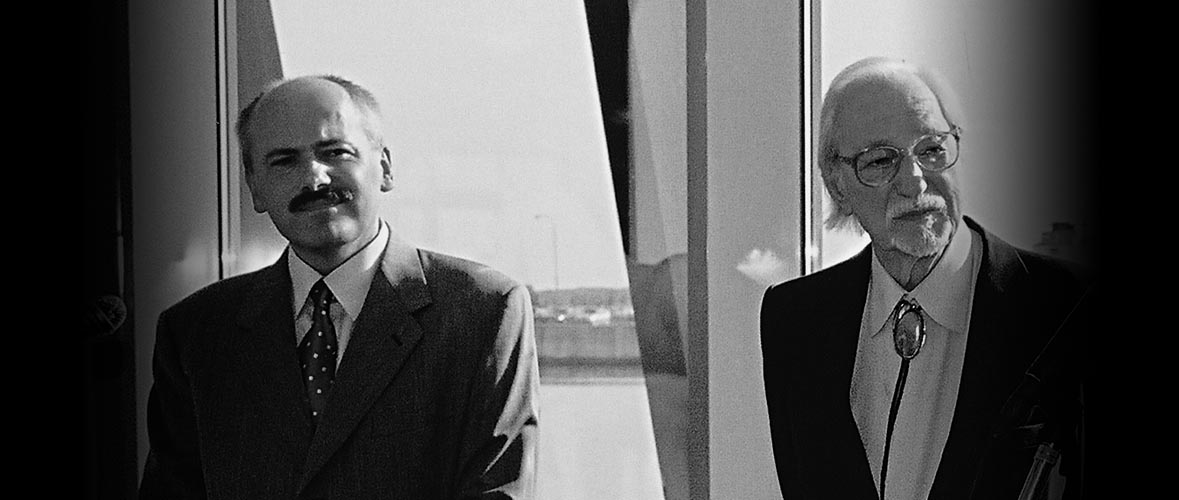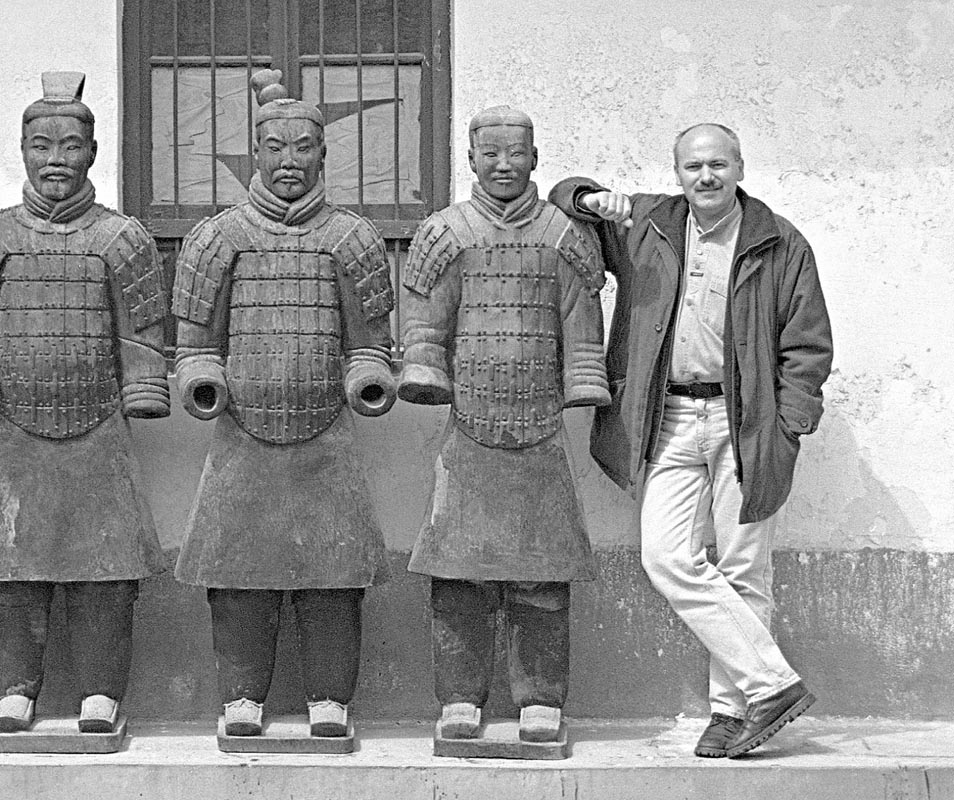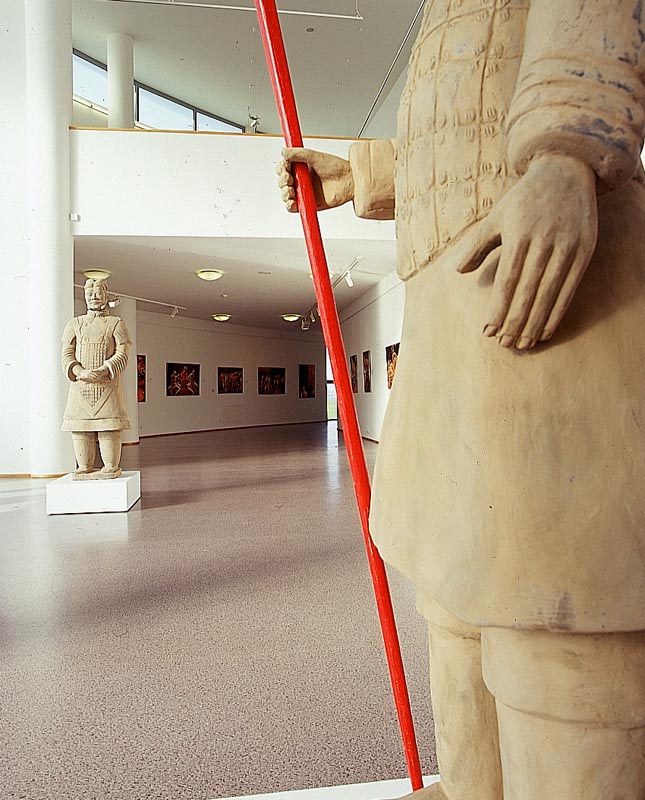

“First Emperor” was a joint exhibition of the American photographer Sidney J. Gluck and the Slovak painter Peter Pollág. Both artists were inspired by the terracotta army guarding the tomb of Qin Shi Huang, the First Emperor of China. Gluck took photographs of the unique figures on the archaeological site near Xi’an. However, his intentions reached beyond the presentation of documentary photography. He converted the photographs to digital form. To produce printed images he composed the photographs, changed their colours and enhanced them with textures. Sometimes he combined several photographs into one to create a more expressive composition with thirty to forty soldiers in the uncovered trenches of the site. Thus Gluck created a series of canvases for the exhibition in Bratislava. The original photographs provided inspiration for new artworks. It is fascinating that in this artistic process “the highest level of technology in antiquity was combined with the most advanced technology of our times”.
The water carriers had been Peter’s friends for years. Walking up Mount Hua Shan (华山) each day with heavy baskets of water, these men provide tea for the tired tourists at the top. They receive little pay and less gratitude. It did not matter that Peter had never met them before, or that they did not speak a common language: they understood each other. For a short while they laughed together, shared the beauty of the mountain and a warming bowl of noodles.
Peter connects with people. Whether on a mountain-side or in a market square, he is one of those people who is a nice person in the truly positive sense. His curiosity for what people do, why and how, is endless. In the Xi’an factory of terra-cotta soldiers, making modern replicas in any size you want, Peter would only continue our guided tour once he understood every step in the process.
As beautiful as those replicas are, they do not prepare you for the beauty of seeing the original ones. The terracotta army was built by order of China’s First Emperor, Qin Shi Huang Di (秦始皇帝) in the 3rd century BC. Seven thousand five hundred soldiers, complimented with officers, horses and chariots. Each statue is larger than life, with an incredible level of detail. The faces represent Chinese soldiers from every part of the empire; the uniforms are decorated for every branch of China’s ancient armed forces. Built to accompany the First Emperor on his final journey, today the long rows of soldiers are a symbol of the people of China’s past. Peter captured this masterfully in his painting, bringing together China’s past and present by having Chinese onlookers sign their names on his painting of the terracotta army. In Shanghai Peter used the same idea to opposite effect. While painting on the Bund, the hyper-modern Pudong-area skyline stands as a beacon of China’s future. Here the signatures of Peter’s audience grounded that future in the present. From the young boy who signed first, to the old Tibetan monk.
No matter where we went, Peter was always sketching the sights, the people, the mood. A teashop in the old quarter of Xi’an, groups performing tai-chi in the morning, the endless laundry lines in narrow streets, calligraphy brushes of all sizes, old men taking their song-birds to the park, outdoor markets, the craftsmen carving your chop (印章) on the spot. At times it seemed a competition: could China offer its sights and sounds faster than Peter could take them in? In the end, Peter’s paintings and drawings offer the answer. Their diversity of colour, atmosphere and pace offer insight to Peter’s appreciation for China. He has since been back to China and exhibited in Beijing.




















